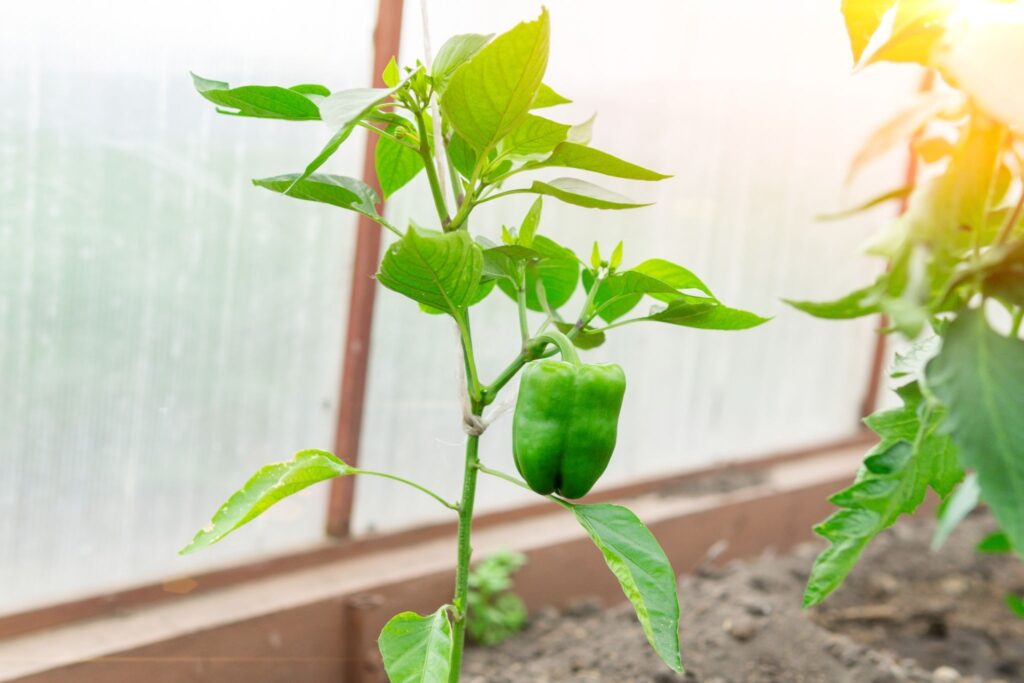Knowing how to prune pepper plants for maximum yield can give you the best returns on your investment.
After all, you need to make sure that you get excellent results from the time, energy, and money you spent on growing your crops.
In this post, you will learn more about expert tips on how you can ensure an abundant yield for your pepper plants. These pruning techniques are all you need to know to elevate your pepper gardening know-hows for great success. Let’s get started!

Pruning Basics – How to Prune Pepper Plants for Maximum Yield
When it comes to learning how to prune pepper plants for maximum yield, you will discover the multiple techniques experts perform to make this goal happen.
Some people choose to top their pepper plants while others prune the lower leaves growing closer to the dirt. Additionally, pruning peppers that are too close together is a smart idea, especially if this limits the air circulation.
Ideally, you need to provide ample spacing between crops, which is not always an easy thing to do when space is an issue in your garden.
But when pruning pepper plants, it is quite easy. After all, this process merely entails cutting off a particular portion of the plant to help them grow more abundantly and healthily.
Moreover, pruning your peppers will keep them in a better condition to survive well during harsh climatic conditions. Pruned peppers are also more capable of resisting strong winds, thus allowing them to produce more fruits.
It is all a matter of pruning them the correct way to guarantee best results.
Quick and Simple Tips on How to Prune Pepper Plants for Maximum Yield
Overall, pruning is beneficial to your pepper plants. It keeps them more stable, helps them to grow fuller, and maintains their proper development.
Since these crops grow vertically, their stems are unable to handle the weight as the peppers reach a taller height. They tend to break easily, which is why removing the top branches minimizes the vertical height and maintains the Y-shape of their branches.
This type of branch growth is what can ensure its strength and full yield.
Here is your guide on how to prune pepper plants for maximum yield:
1. Know the right time to prune.
The first thing you need to know is to determine the optimal time to initiate the pruning process. Experts agree that pruning can be done once your crops have reached 5 to 6 weeks of growth.
It is at this time that pepper plants are leggy. True leaves and branches would have already grown, so pruning can improve their growth.
You should top-prune your crops to prevent them from getting leggier. The branches will then become sturdier, fuller, and healthier. This technique also allows for the crop’s resiliency, especially when harsh weather conditions wreak havoc to your crops.
2. Prune a few weeks prior to the first frost.
Three weeks before winter, your peppers have reached the final stages of their lifespan.
Thus, if you allow them to grow further without pruning them, the first frost is most likely to kill your crops. This technique is called “heavy pruning.” What this means is that you will snip away all the stems and branches that are void of pepper pods.
Furthermore, this technique will encourage your crops to bear more fruit before winter. This is why three weeks prior to winter, be sure to perform heavy pruning on your pepper plants.
3. Choose the first plant you need to prune.
With the right tool in hand (specifically, a pair of good scissors), you should select the first pepper crop you need to prune.
My recommendation is that you prune your crops one after the other. This way, you can be sure that no crop is left behind.
Here are a few other pointers you need to know on how to prune pepper plants for maximum yield. Watch this video to learn more:
Additional Tips You Need to Know
Before you prune, be sure to determine the nodes on the plants you have chosen to prune. The nodes are your crop’s growth centers, and these are the areas where flowers, leaves, and branches grow from.
I would count up to 3 nodes from below the main stem of your plant. Then, simply snip away the stem above node #3. This is what we refer to as topping or top pruning.
When you top-prune, you are removing the plant’s tip. Then, your crop will be able to focus on the growth below the cut. Thus, the growing direction of the branches will be lateral instead of vertical. As the branches grow this way, they will be more stable and more capable of producing more peppers.
Do keep in mind that pruning is recommended for your pepper plants. However, you do not necessarily need to prune all of them. There are some wide and short pepper plant varieties that do not require pruning. Only the leggy and tall ones can benefit greatly from pruning.
Overall, topping is the most excellent way to ensure the full growth of your pepper plants. This technique halts the plant’s vertical growth and allows the branches to extend to the sides instead of vertically. This will keep the crops more bushy and fuller.
Bottom Line
It is important to know how to prune pepper plants for maximum yield. By following the steps and tips presented in this post, you should be able to perform the correct pruning techniques for the best results on your crops.
So, be sure to prune your pepper plants at the right time and at the correct location. Then, you can benefit from this process and ensure a more abundant and profitable yield all year round!